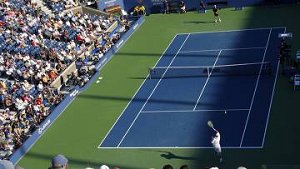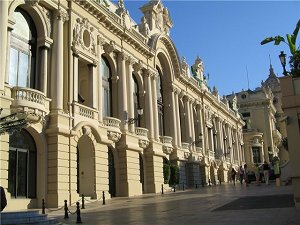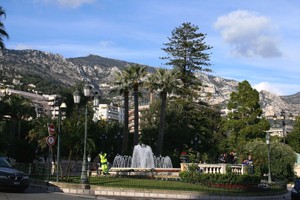Sardinian protectorate
 An agreement between Monaco and Sardinian King Victor Emmanuel I was signed at Stupinigi on November 8, 1817. It was much less favorable for the principality than the treaty with France that was in force before the French Revolution. The finances of the principality were in miserable condition, the country’s resources were reduced, and the communes, parishes and hospitals owed large sums of money.
An agreement between Monaco and Sardinian King Victor Emmanuel I was signed at Stupinigi on November 8, 1817. It was much less favorable for the principality than the treaty with France that was in force before the French Revolution. The finances of the principality were in miserable condition, the country’s resources were reduced, and the communes, parishes and hospitals owed large sums of money.
Coat of arms of the Sardinian king Victor Emanuel I. After the death of Honore IV, power passed to his son Honore V (1819–1841), to whom Napoleon in 1810 appropriated the title of baron, and the Restoration regime became the peer of France. The new prince took measures to overcome the crisis.However, his tough policy met with dissatisfaction of the population and protests, especially in 1833 in Menton. After the death of Honore V, power passed to his brother, Florestan I (1841–1856), a great admirer of literature and theater, completely unprepared for government. Most of the issues were decided by his wife Carolina, who came from a bourgeois family. She managed to temporarily alleviate the discontent caused by the decrees of Honore V. But the relaxation of tension did not last long, and soon Florestan and Carolina again tightened their policies, hoping in this way to restore the welfare of the principality.
Meanwhile, in Menton, demands for independence were heard louder. Residents of the city sought the adoption of a liberal constitution, similar to the one introduced by King Karl-Albert in the Sardinian kingdom. They rejected the constitution proposed by Florestan. After the revolution of 1848 in France, the situation worsened. Florestan and Carolina transferred power to their son Karl.
But it was too late. The uprisings began, Prince Florestan was overthrown, arrested and imprisoned, and princely rule abolished. However, in 1849 Florestan was restored to the throne.
March 20, 1848 Menton and Roquebrune, officially remaining Lenas of Savoy and Sardinia, proclaimed themselves free and independent cities “under Sardinian patronage.” On May 1, 1849, the authorities of the Sardinian kingdom issued a decree on their accession to the Nice district. The princes of Monaco Florestan and Charles III (1856–1889) were never able to return these territories.
In March 1860, in gratitude for the military assistance provided by the French emperor Napoleon III to the cause of the unification of Italy, the Kingdom of Sardin ceded France to Savoy and the county of Nice, including Menton and Roquebrune. July 18, 1860 Sardinia withdrew its troops from Monaco, thereby putting an end to the protectorate.
According to the contract of February 2, 1861 between Prince Charles III and Napoleon III, Monaco renounced all rights to Menton and Roquebrune in favor of France, for which he received compensation in the amount of 4 million francs. The treaty officially recognized the independence of the Principality of Monaco, but it was reduced to 1/20 of its former area. In accordance with the unpublished supplementary articles of the treaty, Monaco promised not to transfer any part of its territory to a power other than France.




